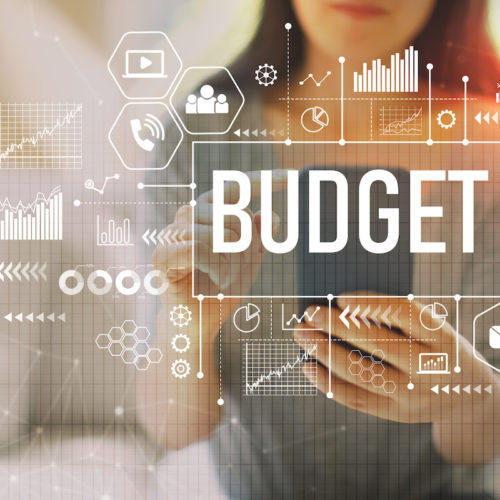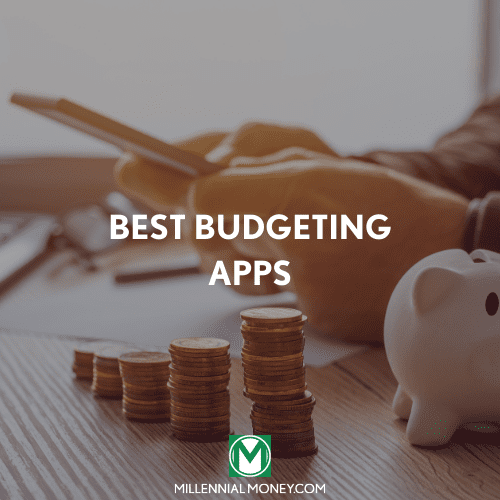I know what you’re going through, trying to live on $1000 dollars per month. Just a few years ago, I was in the same rut.
There’s no getting around it: Having weak cash flow isn’t anyone’s idea of fun. That said, there’s no shame in being cash-poor. Many people experience poverty while on the quest for financial independence. Some even consider it a right of passage.
In this post, I’ll show you what it takes to live on $1,000 per month and why it’s a nearly impossible task. Then, I’ll offer some practical ways to help you get out of your financial hole and settle into greener pastures.
How to Live on $1000 Dollars a Month
1. Get Your Personal Finances Straight
If you’re trying to live on a grand per month, the first thing you need to do is accept that you’re in a difficult personal financial situation and that you’re responsible for getting out of it.
Once you’ve acknowledged that, it’s time to rein in your spending and stop wasting money on frivolous things.
Chances are you’ll have to make some big changes to your lifestyle. You need to accept that and get ready to fix the situation.
2. Rethink Your Living Situation
💰 Target monthly housing budget: $0-300
If you’re trying to live on a $1,000-a-month budget, all of it can’t go to housing.
Unfortunately, the national average fair market rent for a one-bedroom apartment or home is $1,105 per month. So even if you cut your budget in half to account for housing, you’ll still fall way short.
Here are some ways to bridge this gap:
Get Some Roommates
If you live alone and have space, get a roommate or two in order to share costs.
List Your Place on Airbnb
You might also be able to bring in some cash by making your space available on an exchange like Airbnb. Do this a couple of times per month and you might even be able to cover your entire rent.
Embrace the Digital Nomad Life
Work online and can’t make ends meet in your city? Consider uprooting yourself and embracing the digital nomad life.
If you’re in a position to up and leave, look into tax-free states like Texas or Florida or countries with a lower cost of living like Colombia, India, or Thailand.
This way, you can combine an American salary with a lower cost of living as you travel the world. If you’re young and up for the experience, why not give it a whirl?
Move Back Home
If moving back in with Mom and Dad is an option, you should consider it. You may be able to move in temporarily until your financial situation improves. Hopefully, they’re cool with you living there for free.
While you might not want to do this, it could be the best decision you ever make. It’s amazing what shelter, a little home cooking, and family support can do while you rebuild and figure out your finances.
It worked wonders for me. Looking back, it was one of the best decisions I ever made.
What Should You do With Your Current Place?
You may be in a situation where you’re making less money than you were when you signed your lease. Maybe you had a pay cut at work or you lost your job and you’re living off unemployment.
Whatever the case may be, the best thing to do in this situation is to review your lease and talk to your landlord. Explain the situation and ask for some options. This may include a payment plan or temporarily subletting your apartment.
Who knows? You may also be able to find another resident to take over your lease altogether.
If you own a house and can’t make your mortgage payments, think before you jump and sell short. Selling a house is very expensive and you’ll have to pay off your mortgage, loans, and closing costs before you see any profits.
Talk to your mortgage provider and ask about freezing payments for a set period of time or refinancing your loan to lower your monthly payments. You could also move out and rent your house temporarily until you can afford to live there again.
3. Slash Your Food Budget
💰 Target Monthly Food Budget: $200
Food is another basic need that you’ll have to factor in. Everyone needs to eat to survive. And not just any old gruel either: If you don’t eat healthy foods, you’ll be miserable and won’t feel well.
Use the following tips to keep your food budget under control.
Stop Ordering Out
You can’t afford Grubhub or UberEats anymore. Sorry. Say goodbye to paying $30 for pizza and wings — at least for now. This habit has to go.
Keep tasty snacks on hand and have meals ready to go at home. This way, when you feel yourself reaching for the order button, you can stop yourself and make smarter decisions.
You may also want to delete your delivery apps to avoid any temptation. You can't use UberEats if it's not on your phone.
Try to Lower Your Cost Per Meal
Eating in more often is half the battle. Now it’s time to optimize your cost per meal.
Sit down at the beginning of the week and plan out what you’re going to eat. Try to spend less than $5 per meal if possible. Once you’ve got your list, go to the grocery store and look for deals to extend your savings.
Some examples of low-cost, nutritious meals include rice and beans, potatoes, pasta, and lentils. Consider buying these items in bulk at a store like Costco to save money (using someone else’s membership if you can).
Get Used to Leftovers
I can’t help but chuckle when I hear people who are trying to budget say they don’t like leftovers.
It’s far more economical to eat leftovers. Why pay for two meals when you don’t have to?
If you’re the type of person who doesn’t like eating leftovers, try changing things up. For example, if you have leftover rice and beans, add some sausage and make jambalaya the next day. If you have pasta, make a macaroni salad or mac n’ cheese. If you have leftover potatoes, mash them.
Bottom line? Getting creative makes eating leftovers more fun.
Look for Free Food
There are a few ways you can get food without paying. If you get really desperate for a meal, find a local food pantry.
You can also get food gift cards by taking surveys on sites like Swagbucks. You’ll have to take a fair amount of surveys to get rewards, but it works, and it’ll only cost you time.
If you have time and patience, you could also try starting a garden and growing fruits and vegetables.
Another option is to keep your eye on local events and watch out for events offering free food. Sometimes, snagging a few free slices of pizza can make all the difference in the world.
Have Potluck Dinners
Chances are your friends are trying to save money on food as well. If that’s the case, suggest hosting a weekly potluck and having everyone contribute a dish. As an added bonus, you can divvy up the leftovers at the end of the meal.
Switch Your Grocery Store
When you have a monthly food budget of $200, you can’t exactly shop at your local organic grocer. Instead, you’re going to have to switch to an affordable option like Walmart or Aldi to save money.
3. Lower Your Healthcare Costs
💰 Target Monthly Health Insurance Premium: $200 – 300
If you’re using Obamacare, it’s probably a good idea to shop around and see if you can save money. Depending on your financial circumstances, you may be able to get help from the government through the Advanced Premium Tax Credit subsidy.
It may also be a good idea to shop around for a plan offering a higher deductible and a lower monthly rate. Some higher deductible plans also support health savings accounts (HSAs), which allow you to put money aside for medical expenses. Those funds grow tax-free.
What is an Off-Exchange Plan?
Another option is to go off-exchange and purchase a health plan directly from a broker or insurance company. Off-exchange plans are ACA compliant but sold separately from exchanges.
If you’re young and healthy, you may be able to find better and cheaper coverage by going this route. However, you won’t be eligible for financial assistance or subsidies.
4. Control Your Debt
💰 Target Monthly Debt Payments: $0-50
Being in credit card or student loan debt with a limited monthly income is a very dangerous combination. You have to treat this as an emergency and do something to get your monthly payments under control.
Pay Off Your Debt
If you have a small amount of debt, the best thing you can do is pay it off and move on. If you’re in a position to pay off a card or loan, it’s worth making the debt go away — even if you have to dip into your savings account to make it happen.
Consolidate Your Debt
Another option is to consolidate your debt to reduce your monthly payments. One option is to take out a loan with a fixed monthly rate. This way, you can pay off your credit cards and deal with a low-cost loan instead.
Another option is to look for a card with a 0% APR and roll your payments into that card. Just be sure to watch out for transfer fees. For example, the Citi Diamond Preferred Card currently has a 0% intro APR on purchases and balance transfers for 18 months and no annual fee. You’ll still have to pay your debts; you’ll just have more of a breather.
Whatever you decide, make sure to either pay off the debt in full before the grace period ends or roll the balance into a new card to repeat the cycle.
5. Cut Your Entertainment Budget
💰 Target Monthly Entertainment Budget: $0
This part is going to sting, but here goes: You have to cut your entertainment budget entirely. All of it.
I’m talking about going to the movies, seeing live music, and going out to eat with friends — every last thing. If the activity you enjoy is fun and costs money, eliminate it from your budget and find a free alternative.
Tips for Cutting Your Entertainment Budget
Slash Your Subscriptions
The average American household now spends over $40 on streaming services every month.
Go through all your subscriptions and remove them one by one. This means Netflix, Hulu, Amazon Music, Google Play, PlayStation Plus, and whatever else you’re paying for. If you’re trying to live on $1,000 per month, paying for these services is ridiculous.
If you need music in your life, there are plenty of ways to do so for free. Look for free online radio stations — the Radio Garden app lets you explore music around the world, and a lot of people use YouTube or Soundcloud to listen to streaming DJ sets. You can also just tune into your local radio station for free tunes.
Host a Game Night
It won’t cost anything to sit around the table and play board games with friends — especially if you make it BYOB. This is a great way to have fun without breaking the bank.
Read or Listen to Free Podcasts
When you aren’t hustling and trying to make money, spend some time reading or listening to financial podcasts. Use this time to discover new ways of making money and achieving personal growth.
You can also go to the library and get yourself a library card. There’s no point in buying books, DVDs, and CDs on Amazon when you can get them at the library for free.
Discover Nature
Head out on foot and discover your local area. Go for a hike in the forest or find a beach and sit down in the sand to unwind. Nature is free, relaxing, and fun to explore. Plus, a little exercise will do you some good.
6. Reduce Your Communications Expenses
💰 Target Monthly Communications Budget: $150
When it comes down to it, you really only need a smartphone and phone plan to get by. Unfortunately, the average cost for a cell phone in the U.S. is now $127 per month.
You’ll need home internet coverage if you work from home. But if you’re planning on moving back in with family members during this rough patch (like I strongly suggest), then you may not need to buy internet at all.
You can also find free public WiFi in places like the library or at your local grocery store.
Don’t bother going into places like Starbucks because you can’t afford to buy coffee right now.
7. Spend Less Money on Car Payments
💰 Target Monthly Transportation Budget: $0-100
Do you really need your car? Be honest.
Chances are that vehicle of yours is costing more money than it’s worth. Unless you’re using the car to get to work or driving for a ride-share service, you should consider ditching it and pocketing the money.
If you sell your vehicle, you’ll be saving money on gas, maintenance, car insurance, and parking.
Of course, a lot of people need their cars. If that sounds like you, consider trading in your current model for a more affordable option using a service like Carmax.
Worried that you’ll be stranded at home without a car? Don’t be. You can walk, bike, or use public transportation to get around town whenever you need to.
Tips for Boosting Your Income
Even under the best circumstances, $1,000 per month is not a huge amount of money. Try to live on $12,000 a year and your quality of life will be less than stellar in the best-case scenario.
To put things in perspective, making $1,000 per month in the U.S. brings you below the poverty line — especially if that’s before factoring in taxes. According to the U.S. Department of Health and Human Services, the poverty threshold for a single person is $13,590.
In short, you need to start making more money.
I’m willing to bet that by making a few small changes, you could find a way to squeeze in an extra $1,000 or $2,000 into your monthly income.
How to Double Your Monthly Income
You can easily double or triple that $1,000 monthly budget with these side hustles:
Walk Dogs on Rover
Rover is an app that connects you with local pet owners. You can make money walking, grooming, and caring for pets. This job definitely doesn’t bite! Plus, you can get some fresh air while walking Fido.
Deliver Groceries on Instacart
Instacart is an on-demand grocery delivery service. When you become an Instacart driver, you can make money shopping for groceries and delivering them to customers around town.
Find Social Media Jobs
Indeed is a leading job aggregator. You can use this site to find social media management jobs where you can work from home on a part-time or full-time basis.
You can also find freelance management social media gigs on sites like Fiverr and Upwork.
Sell Unwanted Items on Decluttr
Decluttr is an app that enables you to sell and recycle unwanted electronics, games, and media. Decluttr pays you for unwanted items — like old computers and DVDs. The site even sends a box and covers shipping costs, making the process even easier.
Using a site like Decluttr is a great way to clear out unwanted items and put some extra cash back in your pocket. With a more open and less cluttered house, you’ll be able to think clearer and will have more energy.
Sell Handmade Objects on Etsy
Etsy offers a platform that enables you to sell homemade wares — like clothes, refrigerator magnets, and coasters. If you have an artistic flair, why not put your talent to use and sell handmade items online?
You might be able to make extra income on Etsy even if you don’t make anything yourself. For example, you might be able to find low-cost vintage items in thrift stores and sell them at a profit on Etsy. If you poke around, you’re bound to find some affordable gems that you can flip sooner or later.
Offer Assistance on Care.com
Care.com is an online community that connects caregivers with those in need. The site offers opportunities like working as a nanny and driving elderly people to doctors’ visits or grocery stores.
Read our Care.com review for more information.
Pick Up Odd Jobs on TaskRabbit
TaskRabbit provides a community for handy workers. If you’re good with your hands, consider building a profile on TaskRabbit and connecting with people who need help with tasks like painting and yard work.
Craigslist is another site where you can pick up odd jobs in your local area, but it’s a bit less regulated than TaskRabbit. Use caution when taking jobs on Craigslist, because the site is known for scams.
Frequently Asked Questions
Should I liquidate my brokerage account?
This is a bad idea for a few reasons. First of all, if you sell everything in your brokerage account, you’ll have to pay taxes on all of your gains. Plus, you’ll destroy your portfolio and miss out on long-term growth.
The only time you should liquidate assets is when you’re buying something like a house or car, you’re launching a business, or you’re covering an emergency expense.
Otherwise, keep your money in your brokerage account and look for other ways to bring in more cash.
Can relocating save money?
Relocating to a tax-friendly or affordable area can potentially save a lot of money over the long term. But in the short term, you may very well lose money.
If you’re thinking about living somewhere else, you have to factor in relocation expenses — like moving costs, real estate expenses, and more. Any way you slice it, relocating to another state can cost thousands of dollars.
Of course, there’s also the chance you’ll move somewhere, won’t like it, and will decide to move back. This will cost even more money.
If you’re considering moving to a new area, money shouldn’t be the only reason. For example, move somewhere because you like the local job market or the environment or because you want to experience a better social life.
When you move just to save money, you may very well regret your decision.
How can I tell if I am eligible for food stamps?
If you’re struggling to buy food, you might want to check out the United States Department of Agriculture’s (USDA) Supplemental Nutrition Assistance Program (SNAP).
To receive benefits, you have to apply in the state where you currently live and meet specific requirements. To see if you’re eligible, head over to the USDA’s state directory of resources.
Do You Want to Live on $1000 Dollars a Month?
Full disclaimer: Getting by on $1,000 per month in America is very difficult. While you may be able to swing it if you get creative, it won’t be a pleasant experience. And in major cities like New York and Los Angeles that have a higher cost of living, it’s downright impossible.
To get back on track, I recommend you cut your monthly budget to reduce expenses. At the same time, start working as many side hustles as you can cram into your day. And look for potential ways you can earn passive income, too.
With the right approach, you’ll start raking in extra money, your bank account will grow, and pretty soon that tight budget of $1,000 will double. At that point, you can finally start to relax a bit.
Here’s a personal challenge: How much can you make this month?
Take a post-it note, write down a target goal, and then get to work. Toss aside the notion that you’re on a $1,000 per month budget and set your sights on more.
If I could climb out of a financial hole, I know you can, too. Work hard, never settle, and you’ll be on your way to financial freedom before you know it.







No comments yet. Add your own